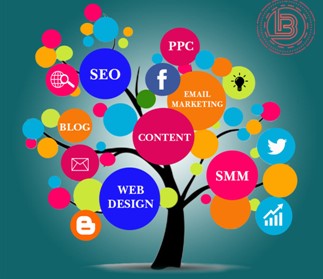In today's digital age, having a strong online presence is crucial for businesses to succeed.…

Simple Office Table Design: Combining Functionality and Style
Introduction to simple office table design
The office environment has undergone significant transformations over the years. With the advent of remote work and the evolution of workspace dynamics, the need for versatile and aesthetically pleasing office furniture has become more critical than ever. One piece of furniture that plays a pivotal role in any office setup is the office table. In this article, we will explore the world of simple office table design, emphasizing the importance of functionality and style in creating a conducive work environment.
The Evolution of Office Tables
Office tables have come a long way from their traditional counterparts. Gone are the days of large, imposing wooden desks that dominated corporate offices. Today, simplicity is key, and office tables are designed to be more adaptable, ergonomic, and visually appealing.
Functionality in Design
Ergonomics
The modern office table places a strong emphasis on ergonomics, recognizing that comfortable employees are more productive and less likely to suffer from work-related health issues. Ergonomic office tables feature adjustable heights, allowing users to customize the table to their preferred sitting or standing position. This flexibility promotes better posture, reduces strain on the body, and enhances overall well-being.
Cable Management
With the increasing reliance on technology in the workplace, cable management has become a crucial aspect of office table design. Simple office tables now come equipped with cable trays, grommets, and built-in cable channels to keep cords and wires organized and out of sight. This not only contributes to a neat and tidy workspace but also minimizes tripping hazards and ensures efficient access to power outlets and data ports.
Storage Solutions
Efficient storage is another essential element of office table design. Simple tables often incorporate drawers, shelves, or under-table storage options to help users keep their workspace organized. These storage solutions can accommodate files, stationery, and personal items, allowing employees to maintain a clutter-free environment.
Style in Design
Minimalism
Simple office table design often embraces the principles of minimalism. Clean lines, uncluttered surfaces, and a limited color palette contribute to a minimalist aesthetic. This design approach not only promotes a sense of order but also creates a visually pleasing and calming workspace. Simple office tables with minimalist designs can seamlessly fit into a variety of office decor styles.
Material Selection
The choice of materials plays a significant role in defining the style of an office table. While traditional office tables were primarily made of wood, contemporary designs incorporate a variety of materials such as metal, glass, and engineered wood. These materials not only offer durability but also allow for innovative and unique design possibilities. For example, a combination of glass and metal can create a sleek and modern look, while natural wood finishes can impart a warm and inviting atmosphere.
Customization
Many modern office furniture manufacturers understand the need for personalization in the workplace. Customizable office tables allow businesses to choose from a range of finishes, colors, and materials to match their brand identity and office aesthetics. This level of customization ensures that office tables can seamlessly integrate into the overall design scheme of the workspace.
Combining Functionality and Style
The true beauty of simple office table design lies in its ability to seamlessly blend functionality and style. Here are some examples of how these two aspects can work together to create an optimal office environment:
Sit-Stand Desks
Sit-stand desks are a prime example of the marriage between functionality and style. These desks offer adjustable heights, promoting ergonomics and employee comfort. Their clean, minimalist design ensures they fit well into a variety of office aesthetics. Additionally, sit-stand desks often feature cable management solutions and customizable finishes, combining the best of both worlds.
Collaborative Work Tables
For collaborative spaces, office tables with modular designs provide both versatility and visual appeal. These tables can be arranged in different configurations to accommodate group discussions, team projects, or training sessions. Customizable finishes and material options allow businesses to maintain a cohesive look while fostering collaboration.
Home Office Tables
With the rise of remote work, home office furniture has gained prominence. Simple office tables designed for home use prioritize both functionality and style. They are often compact, with integrated storage solutions, allowing users to create an efficient workspace within their homes without compromising on aesthetics.
Conclusion
The world of office table design has evolved significantly to meet the changing needs of the modern workplace. Simple office tables, with their emphasis on functionality and style, offer a versatile solution for businesses seeking to create conducive work environments. By prioritizing ergonomics, efficient storage, adaptability, and aesthetics, these tables contribute to employee well-being and productivity while enhancing the overall look and feel of the workspace. In a world where the line between work and personal life continues to blur, investing in well-designed office tables is a step toward creating a harmonious and productive work environment.




This Post Has 0 Comments